Description
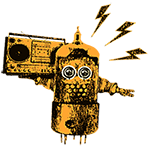
Buying Loopscape entitles you to get its sister product, Loopscape Vinyl, for half price! See our Hot Deals page to grab this offer.
“Dripping in oxide… You can almost taste the wow, flutter and print-through as the recordings faithfully, if perversely, reproduce every blip, hiss and click… example patches like Shenai Drift show off its warmth admirably”
![]()
“With three loops combined, the result is a lush and dense synthesiser sound, evolving and transforming constantly… it’s incredible.”
![]()
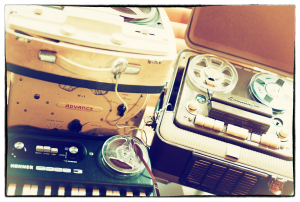 Inspired by the experimental soundscapes produced by 70s pioneers like Brian Eno, Loopscape is a synthesiser that creates endlessly modulating, evolving complexities of sound from raw waveforms recorded onto looped sections of audio tape. It is richly warm, thoroughly analogue, and every sonic inch of it has been printed to oxide and passed across the playback heads of vintage tape gear of the past. This is the sound of science meeting art: the depth of analogue synthesis run through real tape spools. And look – it’s covered in knobs and sliders, too!
Inspired by the experimental soundscapes produced by 70s pioneers like Brian Eno, Loopscape is a synthesiser that creates endlessly modulating, evolving complexities of sound from raw waveforms recorded onto looped sections of audio tape. It is richly warm, thoroughly analogue, and every sonic inch of it has been printed to oxide and passed across the playback heads of vintage tape gear of the past. This is the sound of science meeting art: the depth of analogue synthesis run through real tape spools. And look – it’s covered in knobs and sliders, too!
Loopscape starts with a simple idea, one that found traction with the musique concrete brigade of the 60s and 70s. Back then, Brian Eno composed “Music for Airports”, a sound installation piece which employed tape loops of different lengths running simultaneously. Although the individual loops cycled round predictably, the combination of sound produced by multiple loops of different lengths running all at once created an “incommensurable” sound that was, to all practical purposes, unlikely ever to repeat. Instead it just continued to evolve, forever, into infinity. Isn’t that just cool?
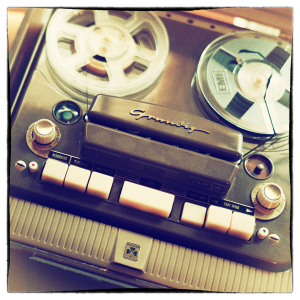 Loopscape takes that concept and turns it into a synthesiser. We started with loops of tape. Lots of loops of tape. The basic sound-creation panes of Loopscape allow you to select any one of six basic synthesiser waveforms: two Sawtooth waves, Triangle, Square, Sine and Noise. All of these started life as true analogue waveforms from a variety of synthesisers, except for Noise, which we took from atmospheric static.
Loopscape takes that concept and turns it into a synthesiser. We started with loops of tape. Lots of loops of tape. The basic sound-creation panes of Loopscape allow you to select any one of six basic synthesiser waveforms: two Sawtooth waves, Triangle, Square, Sine and Noise. All of these started life as true analogue waveforms from a variety of synthesisers, except for Noise, which we took from atmospheric static.
The raw waves were then recorded onto several old tape machines running at a variety of speeds. Now, for this instrument to make sense, the last thing we needed was clean tape machines. We wanted every mechanical problem under the sun, simply because we wanted our tape loops to show a lot of natural variation in their sound. We invited wow, flutter, wobble, hiss, head bump and print-through into our homes, sat them down and poured them a drink. We made friends with them. Who needs Studer mastering machines at 30ips when you can have cranky old 60s valve sets from the attic instead? The outputs of these vintage tape recorders were then recorded back into the digital domain at 24-bit quality to preserve every wonky detail of their erratic goodness.
Each basic waveform is therefore available within Loopscape at 8 different loop lengths: half a second, two thirds of a second, 3, 5, 7, 11, 13 and 17 seconds. (Why those particular numbers? Because they’re primes, and we believe they have a special mojo all of their own.) We wanted you to be able to hear those loops, so we deliberately chose sections of tape that failed to loop smoothly, and we did very little to disguise their splice points. If you select a half-second loop, you’re going to hear that thing looping round every half a second like a heartbeat.
Loop that funky oxide, white boy
A step-by-step guide to loopscaping your patches
EXAMPLE 1: SINGLE 3-SEC LOOP, ONE NOTE
This is the sound of a single loop played for 30 seconds. We selected the “Saw 1” waveform, set it to a 3 second loop length, and just held down the note. You’ll hear it looping round and round rhythmically. There are no other effects or processes going on, just the raw sound of the recording.
EXAMPLE 2: SINGLE 3-SEC LOOP, TWO NOTES
This is exactly the same set-up as the first example, but instead of holding down just one note, we held two to make a perfect 5th chord. Although there’s still no other processing and only a 3-second loop being used, you can hear how immediately more lush and complex the sound becomes – largely because there are now two 3-second loops in play, not just one.
EXAMPLE 3: THREE SIMULTANEOUS LOOPS, TWO NOTES
Now we take things one step further, adding the other two tape loops to our sound. To the 3-second loop of “Saw 1”, we add a 13-second loop and a 17-second loop, both also of “Saw 1” (to keep things simple!) We now have a combined loop that won’t repeat for about 13 minutes, although the cyclical beat of the 3-second loop is still discernible.
EXAMPLE 4: THREE LOOPS PLUS EFFECTS, TWO NOTES
This is starting to sound like a Loopscape patch now! To our three looping waveforms we add effects and LFO magic to create a rich, dense wash of sound. We still haven’t even touched the three envelope generators, and it’s still just two notes playing, but with any luck this is enough to give you a sense of what Loopscape can do.
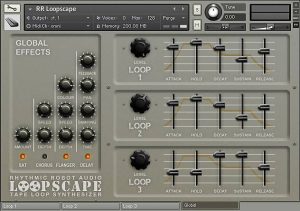 Now the fun really begins, because that looping segment of tape can now be processed by a resonant high / low pass filter and four dedicated LFOs. One of these is assigned to filter cutoff; two work independently on the amplifier circuit; and one goes to pitch. These LFOs can be chosen freely from five different waves – Sine, Triangle, Sawtooth, Square wave and Random; and each can have its depth, rate and speed set independently. You can also decide whether to have your LFOs retriggered with each key press, or “freewheeling” and therefore synced across all notes (for more obvious periodic beating effects). In practice, this means that an already richly-modulated source wave can be further modulated by multiple LFOs, each bringing their own cyclical variation to the sound. Wild!
Now the fun really begins, because that looping segment of tape can now be processed by a resonant high / low pass filter and four dedicated LFOs. One of these is assigned to filter cutoff; two work independently on the amplifier circuit; and one goes to pitch. These LFOs can be chosen freely from five different waves – Sine, Triangle, Sawtooth, Square wave and Random; and each can have its depth, rate and speed set independently. You can also decide whether to have your LFOs retriggered with each key press, or “freewheeling” and therefore synced across all notes (for more obvious periodic beating effects). In practice, this means that an already richly-modulated source wave can be further modulated by multiple LFOs, each bringing their own cyclical variation to the sound. Wild!
What we’ve just described is the contents of one Loop Playback pane of Loopscape. And Loopscape has three of these: that’s where we get our multiple tape loops from, in the spirit of Mr Eno. Three different tape loops, of whatever lengths you choose, playing back whatever waves you choose; modulated by a total of twelve sets of LFOs, either freewheeling away or triggered afresh with each key. In a word, awesome. And it’s not at all complicated: take a look at the screenshot above and you’ll get the hang of what we’re talking about here in no time. Drag that big chunky pinch-roller at the top of the screen to set the loop length. Choose a waveform to play back from the little Loop Select pane. Then go to town with the filter and LFO modulations. And do it all three times over, switching between Loop machines using the tabs at the bottom of the screen, for three times the sonic power. That’s all there is to it.
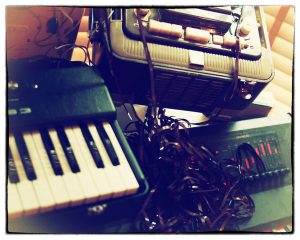 By setting up the Loop panes you create an astonishingly rich sonic tapestry, warmed with real oxide. You now take control of that sound on the Global pane, which gives individual Level and AHDSR envelopes for each Loop that’s running, plus a set of Global Effects designed to complement Loopscape’s character. The envelopes allow you to, say, start a sound with one loop predominating, and then have another gradually rise in level to take over; they can, if you like, add their own gradual sonic development to your patch. Meanwhile the Effects take in extra tape saturation, to give the sound some real drive; Chorus and Flanger, for classic additional tape effects; and a fully-featured Delay. These last three all incorporate stereo effects to widen the sound.
By setting up the Loop panes you create an astonishingly rich sonic tapestry, warmed with real oxide. You now take control of that sound on the Global pane, which gives individual Level and AHDSR envelopes for each Loop that’s running, plus a set of Global Effects designed to complement Loopscape’s character. The envelopes allow you to, say, start a sound with one loop predominating, and then have another gradually rise in level to take over; they can, if you like, add their own gradual sonic development to your patch. Meanwhile the Effects take in extra tape saturation, to give the sound some real drive; Chorus and Flanger, for classic additional tape effects; and a fully-featured Delay. These last three all incorporate stereo effects to widen the sound.
Loopscape is capable of producing a sound so dense, rich and evolving that one single held note will quite simply not repeat its sonic fingerprint for thousands of years. Seriously: we did the math on this. That’s Brian Eno’s “incommensurability” right there, folks! More importantly, though, by sculpting and tweaking your patches with the filters, and by balancing levels, you can create astonishingly varied pad sounds, evolving soundscapes, textures, beds and washes – Loopscape’s signature sounds; plus a huge variety of “traditional” synthesiser patches with a unique sonic imprint to them, born of Loopscape’s inherent unpredictability and magnetic-oxide heritage.
Loopscape is our most ambitious project to date, and embodies everything we love about old technology: warmth, nonlinearity, valves, solder, heart, static electricity, tolex and tape spools. We love it to bits, and we hope you will too.
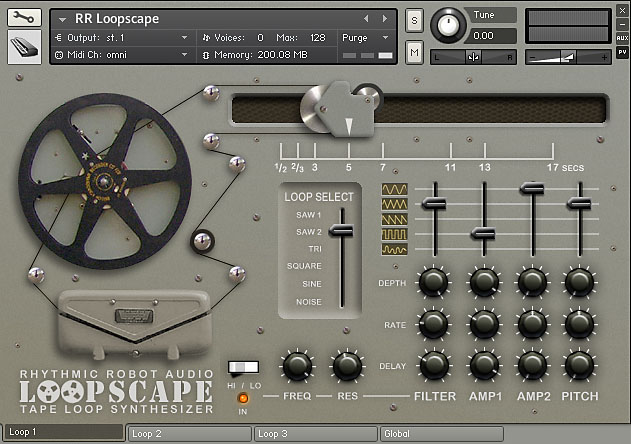
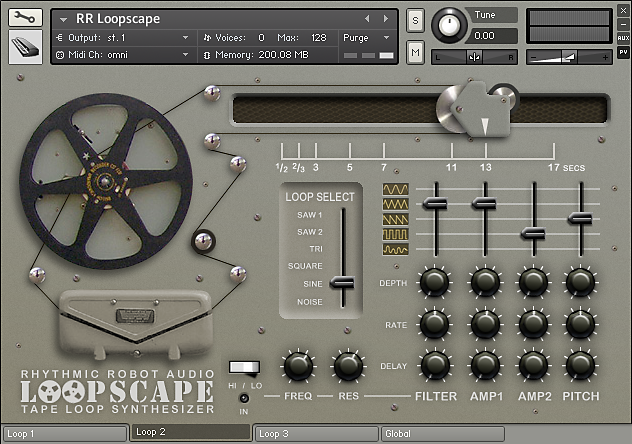
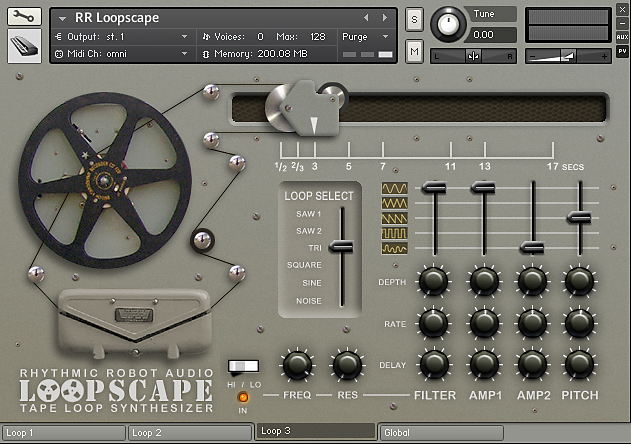
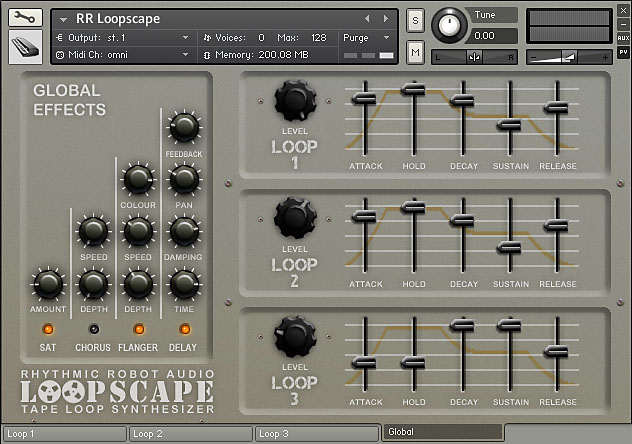
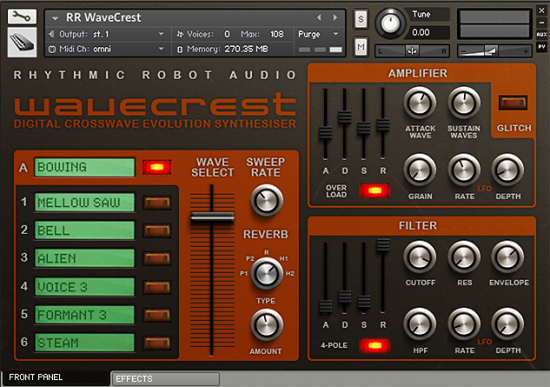
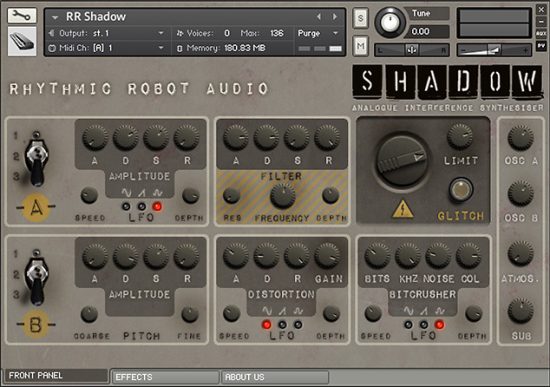
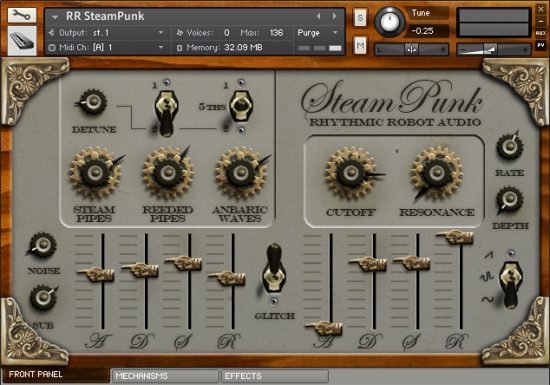
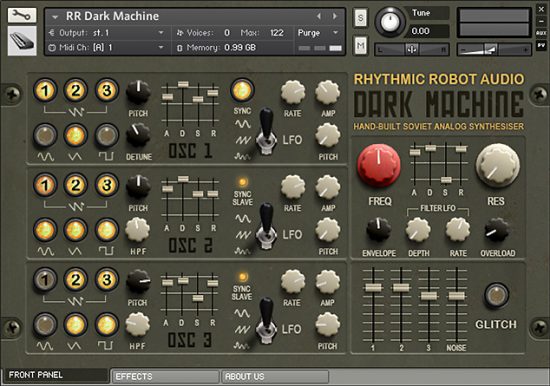
JAMES (verified owner) –
This was one of the first RR instruments I purchased some time ago. I was attracted to it as a fan of Eno and Terry Riley, as well as many others. This is a brilliant usage of Kontakt to duplicate hardware experimentation and take it to worlds that would be impossible to duplicate with gear. It is very flexible and easy to tweak for your own unique patches. It is great as bed track to create instant age and atmosphere but works in the forefront for complex pads and drones. With clever programming, you can get leads and basses out of it as well. I only knock one star off my rating because, as others have said, there are not a lot of presets to start with (compared to the generous number in Loopscape Vinyl and most other RR creations). This was an earlier creation for the Lab, but the addition of the amazing “Glitch” button and making reverb easily accessible in the GUI in a future update would be very welcome. These complex tones long for some long reverbs.
mightbeacoolusername (verified owner) –
A previous reviewer said that this is so much more than an instrument, and they’re exactly right. This is a whole world of sonic serendipity we’ve been graciously given by mathematics and magic. Bonus points if you use it in a public space.
W.TaylorRiley (verified owner) –
There’s a Japanese Band with three people, and they each play modified tape machines, like instruments. I think one of their machines is like this. I forget the name of them, probably include MAGNETIC PUNK in the google search and you can find them. This reminds me of them, but they are MUCH more out there… just wanted to share that for context to my next statement. This has MAGNETIC PUNK written all over it!! Though you probably won’t be making any Ramones covers with this lol… Super cool. Gonna layer up awesome with other RR products!! Probably something digital for a good collage of sounds…
evan.j.lange (verified owner) –
Wonderfully inspiring. Perfectly imperfect.
The descriptor “soundscape generator” is very very accurate. It is so much more than an instrument.
Poesque (verified owner) –
Eno. Minimalist. Repeat loop. Eno. Minimalist. Repeat loop. Eno. Minimalist. Repeat loop. Let the oxide warble and the moon wane. Ah, yes.
DON Chaffer (verified owner) –
I love the warped evolving vibe of this thing, which it’s capable of adding immediately, and with a frequency response that’s useful in a mix (not all that needless bottom and top that so many synth developers love to give you gobs of). One negative: sometimes, the warpedness is of such intensity that it’s difficult to apply from a pitch perspective. I suspect there’s something I can do about this… need to RTFM.
Chris (verified owner) –
This was the first RR creation I bought (I have quite a few now), and it’s something I still turn to frequently if I want lovely evolving pads or textures.
Stefano (verified owner) –
The sounds on tape has a special warmth and magnetism, Loopscape give you the possibility to create neverending and unpredictable loops. Great for minimalism and ipnotic compositions.
mrianrjohnson (verified owner) –
Takes a little while to really get to grips with it, but when you do……WOW! I especially love the infinite delay – perfect for building up some seriously out there pad sounds. Think William Basinski and you’re not far off. Exactly what I was hoping for!
Margaret (verified owner) –
This is brilliant for adding a retro feel to your tracks as of many RR vintage instruments. I really like tweaking from the Loopscape templates, working with the different loop waveform lengths. I created this perfect string sound for a vintage super 8 movie.
Alex (verified owner) –
This is just a sublime way to add this little extra into your music and change the mood completely. Subtle or more in front, works both ways! Superb.
Martin –
Absolutely love the sounds, well worth the price. The interface is super deep, which does make me wish it shipped with more presets, but I’ve made a bunch of cool patches from scratch. Also have Loopscape Vinyl but I think I prefer the OG.
riemain –
Great stuff for droning, intro and ambient music.
Jorge David –
Excellent for create atmospheres and textures…
Collin Bragdon –
I used this on my boss’s machine during a past sitcom scoring project. Really dig the tape feel of these sounds. Great for if you want something almost overwhelmingly ethereal but with plenty of analog/tape touch.
Tomasz (verified owner) –
The samples are fantastic and there is almost no way to make this instrument sound dull. It gives you the instant “familiar sound but twisted, but in a familiar way” effect, I guess a bit reminiscent of Mellotron sounds. Oh, and if you stack several instruments in a multi and detune them like organ stops you get a mean electric organ sound. The programming could use a few extra options, like detuning the layers and filter envelope, but otherwise it is a wonderful instrument.
Ley –
I remember when tapes loops were a lot of fun but also a lot of fiddly work and too many things to trip over. This development contains three loops in one box (and you can always open more ‘boxes’ on additional tracks.) The interface is clear and enjoyable with all you need for making it easy to ‘hide the seams’ in long evolving loops. I’m sitting in an airport now spinning some cool ambience from a handful of loops and thinking about what I’ve saved in excess baggage fees alone for that many tape machines…
The Professor (verified owner) –
You mean you actually used this Music For Airports-inspired instrument to write music… in an airport? That just makes our day 😀
Paul Hammond –
amazing textures
Telex2Texel (verified owner) –
Picked this up during the recent sale, got a great price, and very happy with it. It doesn’t ship with many presets (only 11), and is only 200MB in size, but this thing is responsive, tweaking those buttons makes me think more that I’m working with a VSTi instrument rather than a sample library. I find it especially suited to make long drawn out pads, tweak the pitch to enter the BOC dimensions. The only thing I’m missing is a randomizer button for some instant inspiration when tweaking.
Alister Webb –
For pads and ethereal soundscapes this is hard to beat. Can be very Eno-esque with the interweaving tape loop variations. I used this VERY effectively to approximate a reverse guitar on one track.